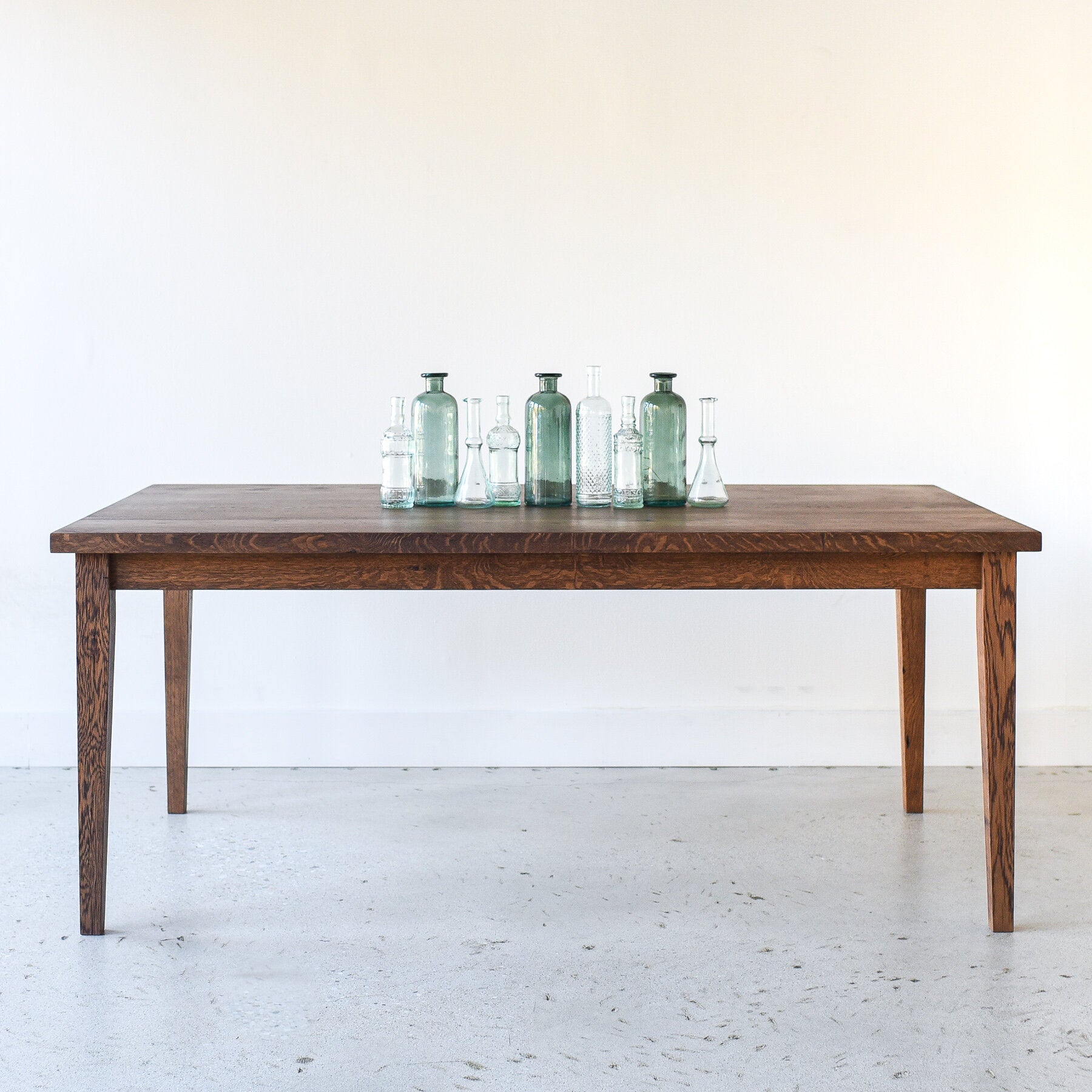A Guide to the Various Kinds Of Dining Table Legs Timber Available Today
When considering the visual and structural components of eating tables, the choice of timber for table legs plays a crucial function in enhancing both design and performance. Comprehending these distinctions not just aids in making an educated choice but additionally exposes just how the right selection can affect the overall setting of your dining area.
Oak Dining Table Legs

Along with their physical properties, oak table legs supply exceptional stability. This makes certain that the table stays tough, even when sustaining heavy things. The versatility of oak enables different leg designs, consisting of tapered, straight, or transformed styles, improving the table's overall style. Oak can be completed in numerous means, from natural oil to discolored coatings, giving options that match private preferences.
Ecological factors to consider also favor oak, as it is sourced and extensively available sustainably in numerous regions. Generally, oak dining table legs are a functional and fashionable choice, incorporating functionality with timeless beauty, making them a prominent choice for eating space furniture. Their enduring high qualities ensure they remain a staple in homes for many years to find.
Maple Table Legs

One of the substantial benefits of maple is its longevity. It ranks high on the Janka firmness range, making it immune to scratches and dents, which is crucial in high-traffic dining areas. Dining Table Legs Wood. Furthermore, maple's security makes sure that it is much less susceptible to warping in time, preserving its structural stability
Additionally, maple can be conveniently tarnished or repainted, making it possible for homeowners to attain the desired aesthetic without compromising on quality. Its natural capacity to absorb finishes means that it can attain an abundant gloss, enhancing the visual appeal of any kind of eating area.
Walnut Table Legs
Walnut eating table legs show a classic style that improves both traditional and contemporary insides. Prominent for their abundant, dark shades and striking grain patterns, walnut legs produce a magnificent prime focus in any type of dining space. Their versatility permits them to match a range of tabletop materials, including wood, marble, and glass, making them a suitable option for varied layout visual appeals.
Resilience is an additional crucial advantage of walnut. This wood try these out is recognized for its resilience, supplying durability that endures day-to-day usage while maintaining its aesthetic charm. The all-natural oils in walnut also provide a degree of water resistance, making it ideal for household celebrations and entertaining.
In regards to style, walnut table legs been available in numerous styles, from minimalist and smooth to ornate and traditional. Dining Table Legs Wood. This versatility enables homeowners to discover the excellent match for their existing decor. Additionally, walnut can be finished in a variety of spots, permitting personalization that improves the wood's natural appeal
Cherry Dining Table Legs
Cherry dining table legs use a warm, welcoming visual that enhances the appeal of any kind of eating area. Prominent for their rich, reddish-brown shade, cherry wood is treasured not only for its beauty but likewise for its sturdiness and security. Over time, cherry wood creates an all-natural patina that strengthens its shade, site here including character and class to your eating area.
One of the standout features of cherry dining table legs is their flexibility. This flexibility makes cherry legs suitable for both sophisticated dining tables and more laid-back setups.
Along with their visual top qualities, cherry eating table legs are structurally audio. The timber's natural resistance to bending and fracturing makes certain that the legs keep their honesty in time, despite regular use. When spending in cherry eating table legs, you not just pop over to this site enhance your eating location's visual appeal but likewise secure a sturdy and durable furniture that can be cherished for generations.

Pine Eating Table Legs
Pine eating table legs stand apart for their light, ventilated look, effortlessly cheering up any type of eating room - Dining Table Legs Wood. This timber kind, understood for its adaptability and availability, is a preferred selection among developers and house owners alike. Pine's natural grain features a warm, rustic beauty that can enhance different interior styles, from farmhouse to contemporary
Among the vital benefits of yearn table legs is their cost. Contrasted to hardwoods like oak or walnut, pine supplies an economical choice without compromising appearances. Its light-weight nature also makes it very easy to rearrange and relocate, supplying flexibility for eating configurations.
Proper treatment and upkeep, such as using coasters and staying clear of too much moisture, can assist maintain the charm of ache eating table legs for years to come. In summary, yearn is an exceptional selection for those seeking design, price, and versatility in their dining furniture.
Conclusion
In recap, the selection of table legs crafted from various wood types dramatically influences both durability and aesthetic appeal. Oak offers stamina and unique grain patterns, while maple offers a light, dent-resistant option. Walnut showcases beauty through deep shades, and cherry improves warmth with its aging qualities. Pine serves as a cost-effective option, although it requires cautious maintenance due to its softness. Each timber type offers unique advantages, accommodating varied design choices and useful needs.
When thinking about the construction of dining tables, oak eating table legs stand out for their durability and visual appeal.While oak dining table legs are commemorated for their strength and charm, maple eating table legs supply their very own unique advantages that make them an enticing alternative. When investing in cherry eating table legs, you not only enhance your dining location's aesthetic allure yet additionally protect a long lasting and durable piece of furniture that can be treasured for generations.
Pine dining table legs stand out for their light, ventilated appearance, effortlessly brightening up any type of eating space.In summary, the choice of dining table legs crafted from numerous wood kinds substantially influences both longevity and aesthetic appeal.